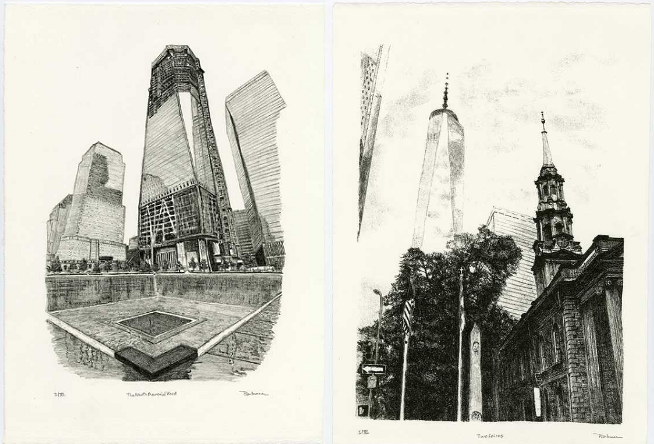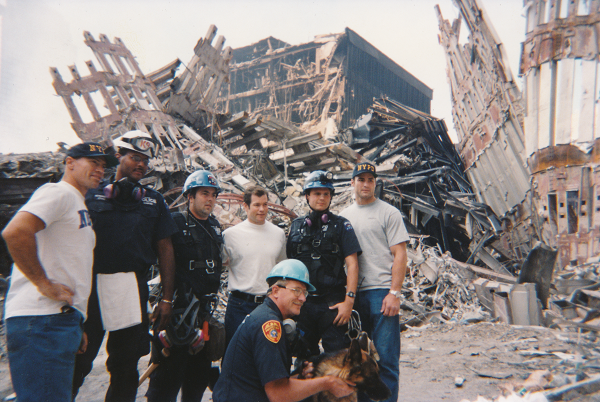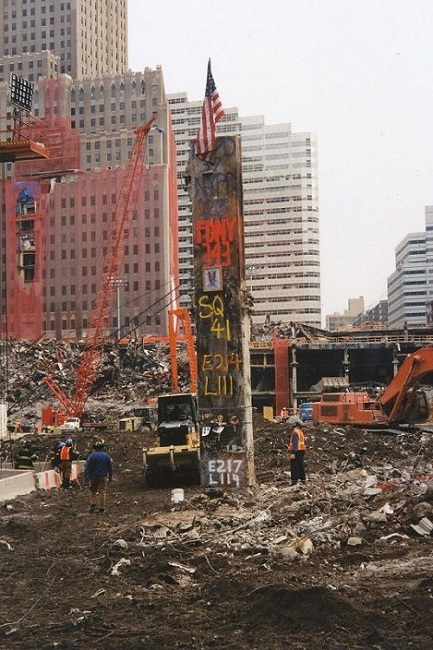Make a donation to the museum
9/11 First Responder’s Artwork Now On View in a Special Exhibition in Brooklyn
9/11 First Responder’s Artwork Now On View in a Special Exhibition in Brooklyn

Brenda Berkman is many things: a lawyer, an historian, a pioneering woman firefighter, a retired FDNY captain, a 9/11 first responder and Ground Zero recovery worker, a docent, a teacher, a White House Fellow and – added to her remarkable resume over the last decade – an accomplished artist.
Berkman turned to the study and making of art full time upon her retirement from the FDNY in 2006. Today, a collection of her stone lithograph prints, “Thirty-Six Views of One World Trade Center,” is on view in a special exhibition at the Charles P. Sifton Gallery at the United States District Court for the Eastern District of New York in Brooklyn. It is the same courthouse in which she won her class action sex discrimination lawsuit against the City of New York in 1982, becoming a pathfinder and crusader in the FDNY’s first class of women firefighters.
Berkman details the story of her career as a firefighter and her passion for art-making in a short documentary video.
Though she was off-duty and at her Brooklyn home on the morning of Sept. 11, 2001, upon learning about the terrorist attacks unfolding downtown, Berkman set out to locate equipment and borrow bunker gear from a nearby firehouse and find a route into lower Manhattan. She managed to arrive at the World Trade Center shortly after the collapse of the North Tower.
Berkman spent months participating in the Ground Zero recovery operations while trying to lead her shaken colleagues and keep communication channels open with the grieving families of Ladder 12’s victims as she and others searched for their remains.
In the aftermath of 9/11, Berkman tried hard to find a way to channel haunting memories of loss into something more optimistic. She began to explore art-making as a mode of self-therapy. In 2008, she enrolled in classes at the Art Students League. There, she gravitated toward printmaking, initially creating block prints which featured her three favorite New York icons – the Brooklyn Bridge, Statue of Liberty and the Chrysler building.
As her technical confidence grew, she began to focus more on stone lithography and etching. Her interest also shifted to the construction of One World Trade Center – sometimes as the composition’s primary aesthetic subject, and sometimes as an incidental geographical element and way-finder in New York’s post-9/11 York landscape, with its rising presence decipherable in a more distant skyline. Berkman often inserts a figure of herself into these compositions, in a seemingly incidental way but present as a witness to this gradual redemption of lower Manhattan’s skyline.
In 2016, the 9/11 Memorial Museum acquired one of Berkman’s three original portfolios of prints for the permanent collection. Executive Vice President of Collections and Chief Curator Jan Ramirez was impressed with Berkman’s fearless investigation and accomplishment as a novice printmaker, and views the series as a visual analogue of Berkman’s resilience and continuing quest for understanding in the aftermath of 9/11.
The artist has explained her project as follows: “Each image contains an iconic view of the new One World Trade Center at various points in its construction and, as such, is a historical record of the building.” Views from all five boroughs of New York City and from New Jersey are included, she notes: “One World is pictured in all four seasons and with elements (animals, prominent trees) that reference the earlier Japanese and French print icon series.”
By 9/11 Memorial Staff
Previous Post
NYC Sports Teams Visit Rescue and Recovery Workers at Ground Zero

In the days after Sept. 11, 2001, first responders and volunteers from all across the country came to Ground Zero to aid in the rescue, recovery and relief efforts. Surrounded by the rubble of the World Trade Center, these volunteers worked tirelessly in the hopes of finding survivors and ultimately, to recover victims’ remains and clean up the site.
Next Post
Interpreting the Last Column: PAPD Team Romeo Marking

On 9/11 and in the following days, many retired Port Authority Police Department (PAPD) officers self-dispatched to Ground Zero to search for survivors. Expecting that officials would soon ask those without credentials to leave the site, some of these officers worked with the PAPD’s newly appointed Chief of Department, Joseph Morris, to form an official search and recovery team composed of retired PAPD members.